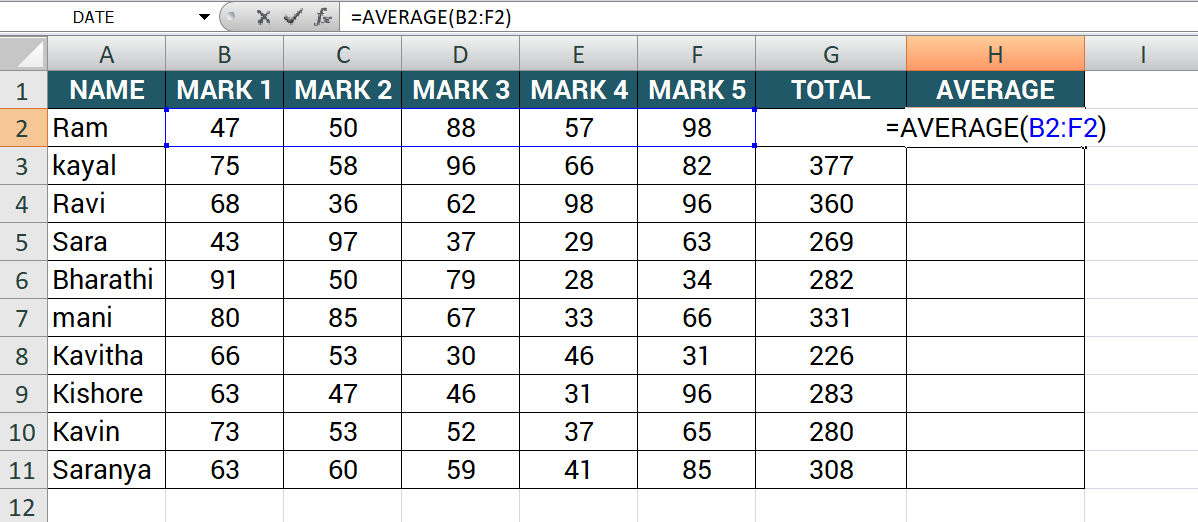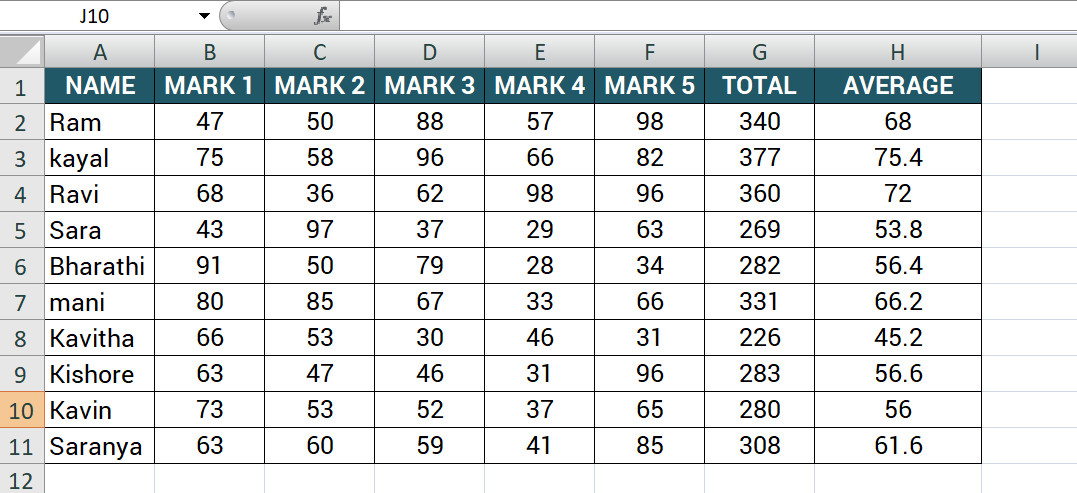Use the AVERAGE Function in Excel
The AVERAGE function in Excel is used to calculate the average or mean of a range of numbers. It returns the arithmetic mean of the numbers in a given range.
Syntax
=AVERAGE(number1, [number2], ...)
Where:
- AVERAGE: This is the name of the function, which indicates that we want to calculate the average.
- number1, number2, ...: These are the arguments of the AVERAGE function. They represent the values or cell references that you want to include in the average calculation. You can provide multiple arguments, separated by commas.
- [number2]: The square brackets around number2 indicate that it is an optional argument. This means you can choose to include it or omit it, depending on your specific calculation.
The arguments of the AVERAGE function are the numbers or ranges that you want to average. You can enter up to 255 arguments for the AVERAGE function.
For example
=AVERAGE(B2:F2)
In this example, the formula =AVERAGE(B2:F2) in Excel is used to calculate the average or mean of a set of marks for a student.
Assuming that the marks for the student are stored in cells B2 to F2, where each cell represents the student's score in a particular subject, the AVERAGE function is used to calculate the average of these marks.
The AVERAGE function takes a range of cells or values as its argument and returns the arithmetic mean of those values. In this case, the range B2 to F2 represents the student's scores in different subjects, and the formula will calculate the average of these scores.
The student's marks in five subjects are 47, 50, 88, 57, and 98, the formula =AVERAGE(B2:F2) will return the average of these scores, which is 68.
averageOutput


Learn All in Tamil © Designed & Developed By Tutor Joes | Privacy Policy | Terms & Conditions